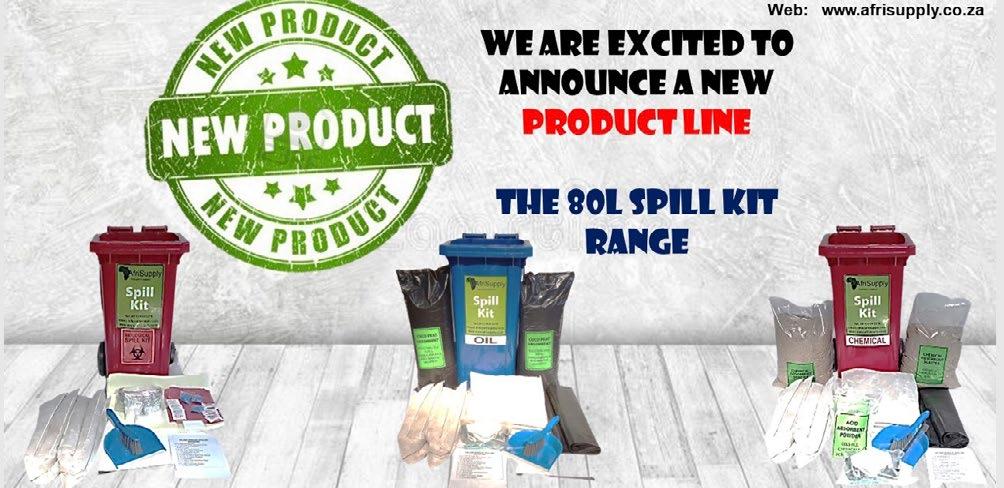
2 minute read
Navigating the world of spill kits
In industrial settings, laboratories, and numerous other environments, accidental spills are not just inconvenient – they can pose significant health, safety, and environmental risks. Enter the spill kit. A lifesaver in many emergencies, spill kits are specially designed to contain and clean up various types of spills efficiently. But what exactly is a spill kit, and why are there so many different types?
Understanding spill kits
At its core, a spill kit is a collection of items, typically stored in a convenient and easily accessible location, used to clean up spills or leaks. The goal of a spill kit is to ensure that people can quickly and effectively respond to an accidental spill, limiting potential hazards and environmental damage.
Types of spill kits
There is no one-size-fits-all spill kit because different substances require different clean-up methods. Hence, there are several types of spill kits tailored to specific spill types:
Universal Spill Kits: These are designed for general-purpose spills, capable of handling a broad range of substances from oils and coolants to solvents and water.
Oil Spill Kits: Specifically for oilbased spills, these kits are essential in areas where oil spillage might occur, ensuring that the oil doesn’t contaminate water sources.
Chemical Spill Kits: Tailored for aggressive chemicals and hazardous substances, these kits contain materials that can safely absorb chemicals without causing a reaction.
Speciality Kits: There are several speciality spill kits, each tailored for a unique type of spill:
• Anti-Static Spill Kits: For flammable liquids in environments where static electricity is a concern.
• Biological Spill Kits: Essential for cleaning up biohazardous materials.
• Glass Spill Kits: Designed to handle glass shards and fragments safely.
• HACCP Spill Kits: Aligned with Hazard Analysis and Critical Control Points, these kits are pivotal in food safety environments.
• Paint Spill Kits: Tailored to clean up paint and solvent spills.
• Mercury Spill Kits: Essential for areas where mercury might accidentally spill.
• Cytotoxic Spill Kits: Designed specifically for the safe handling and disposal of cytotoxic substances.
Conclusion
Being prepared for spills means having the right tools on hand. With an array of spill kits tailored to different needs, it’s essential to select the one best suited for your environment. Proper training on using these kits is equally crucial, ensuring that if an accident occurs, the response is swift, safe, and effective. Whether you’re dealing with a minor paint spill or a hazardous chemical leak, there’s a spill kit designed to handle the challenge.
For more information visit: www.afrisupply.co.za









